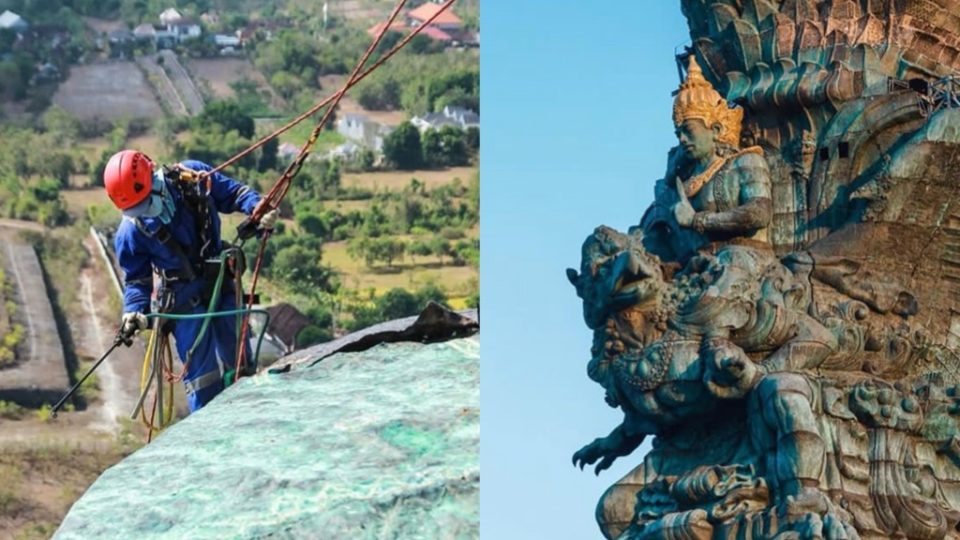Rome wasn’t built in a day and neither was Bali’s Garuda Wisnu Kencana (GWK) statue in Jimbaran.
The final module of the 121-meter tall sculpture at the 60-hectare GWK Cultural Park was installed on Tuesday, almost 30 years after the project’s design was made in 1990.
The massive sculpture sits atop a building base which will function as a restaurant, museum, and viewing gallery.
Depicting the Hindu god Wisnu riding the mythological Garuda creature, the sculpture’s towering height makes it the second-tallest statue in the world after the 128-meter Spring Buddha Temple in China, according to Kompas.
GWK sculptor Nyoman Nuarta says the installment of the final module, number 754, is bittersweet.
“It’s not over yet, but it’s sad. 28 years and now our (work) yard has suddenly disappeared,” Nuarta told Tribun Bali on Tuesday.
“The workshop is quiet now, but it’s nice too. But yes, also excited,” he said.
A video of project crew celebrating was posted to Instagram yesterday by the park’s page.
For years, the project site was an eyesore, with scaffolding jutting out from the hills of Jimbaran, the only tall structure sticking up from South Bali’s Bukit Peninsula.
RELATED Viral Video: Crane lifts Wisnu’s 4-ton head for installation at Bali’s GWK
But when Bali was designated as the site of the October 2018 IMF-World Bank meeting, the province selected GWK’s completion as a priority, pushing to get the thing finished ahead of the meeting by August 2018.
Construction wasn’t easy for the sculpture. Sitting atop a breezy hill, work had to be scheduled around wind conditions. Special attention also had to go towards making the structure earthquake resistant.
GWK has been controversial since its inception. Back before it was even built, the project was protested by Hindu religious leaders who feared the colossal statue would disrupt the spiritual balance of Bali, where traditional law holds that building heights should not exceed that of a coconut tree, or 15 meters. They also weren’t too keen on a sacred religious symbol being used as a commercial tourist attraction.
Ultimately, however, the project pushed forward with the hope that it will bring in more tourists and thus more revenue into Bali.




